Rick in Da Vinci's amazing studio inside Clos Luce
Leonardo da Vinci, Master of Inventiveness
Rick and I hiked up to Monte Ciceri above Florence, Italy to witness the location of Da Vinci’s first winged flight in 1509. We marveled at his Last Supper in Milan. We stood in awe at the Mona Lisa in the Louvre. While in Venice, we toured his museum. So when I read about Clos Luce in a travel magazine, my eyes opened wide. The two of us had to go experience this. So we drove from Paris to Amboise in the Loire Valley. And while so many arrive in this region to gape at the magnificent castles in the area, we were here to see where Leonardo da Vinci spent the last three years of his life.
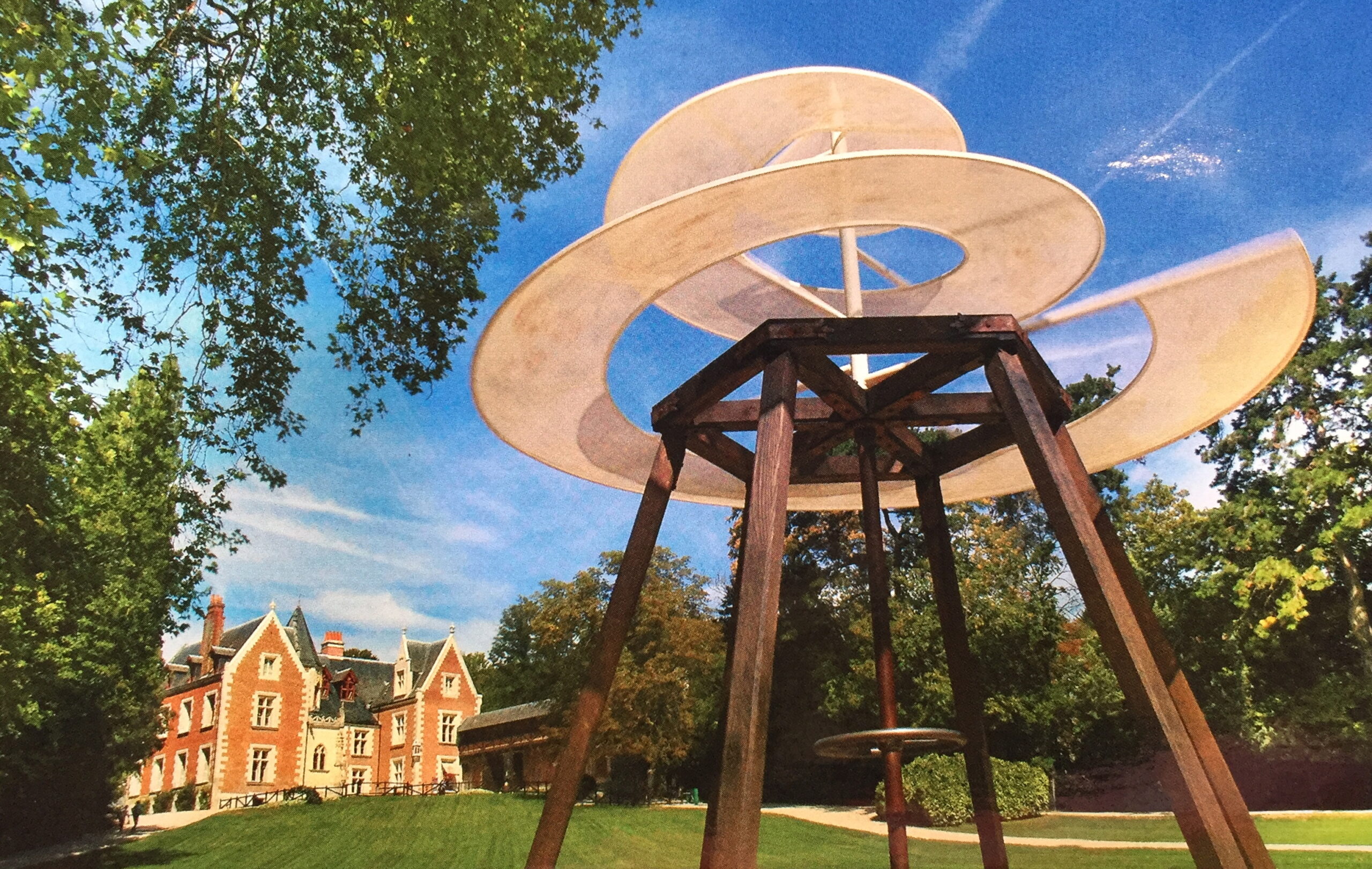
Leonardo da Vinci’s helicopter in the garden of the beautiful chateau Clos Luce
Clos Luce is a small chateau built of pink brick and tufa stone in Amboise, France in the Loire Valley. This chateau is where Leonardo da Vinci, the world’s greatest Renaissance creator, spent the last three years of his life, dying here in 1519 at the age of 67. Carrying with him his unfinished Mona Lisa, Da Vinci arrived into the Valley at the request of King Francis I who lived in the castle in the town of Amboise. Francis appointed Leonardo the title of “First Painter, Architect, and Engineer to the King” and along with the chateau, Clos Luce, he provided him with a hefty allowance. All Da Vinci had to do was spend time talking to the King every day. And he did. During his three years at Clos Luce, Da Vinci finished his beloved Mona Lisa.
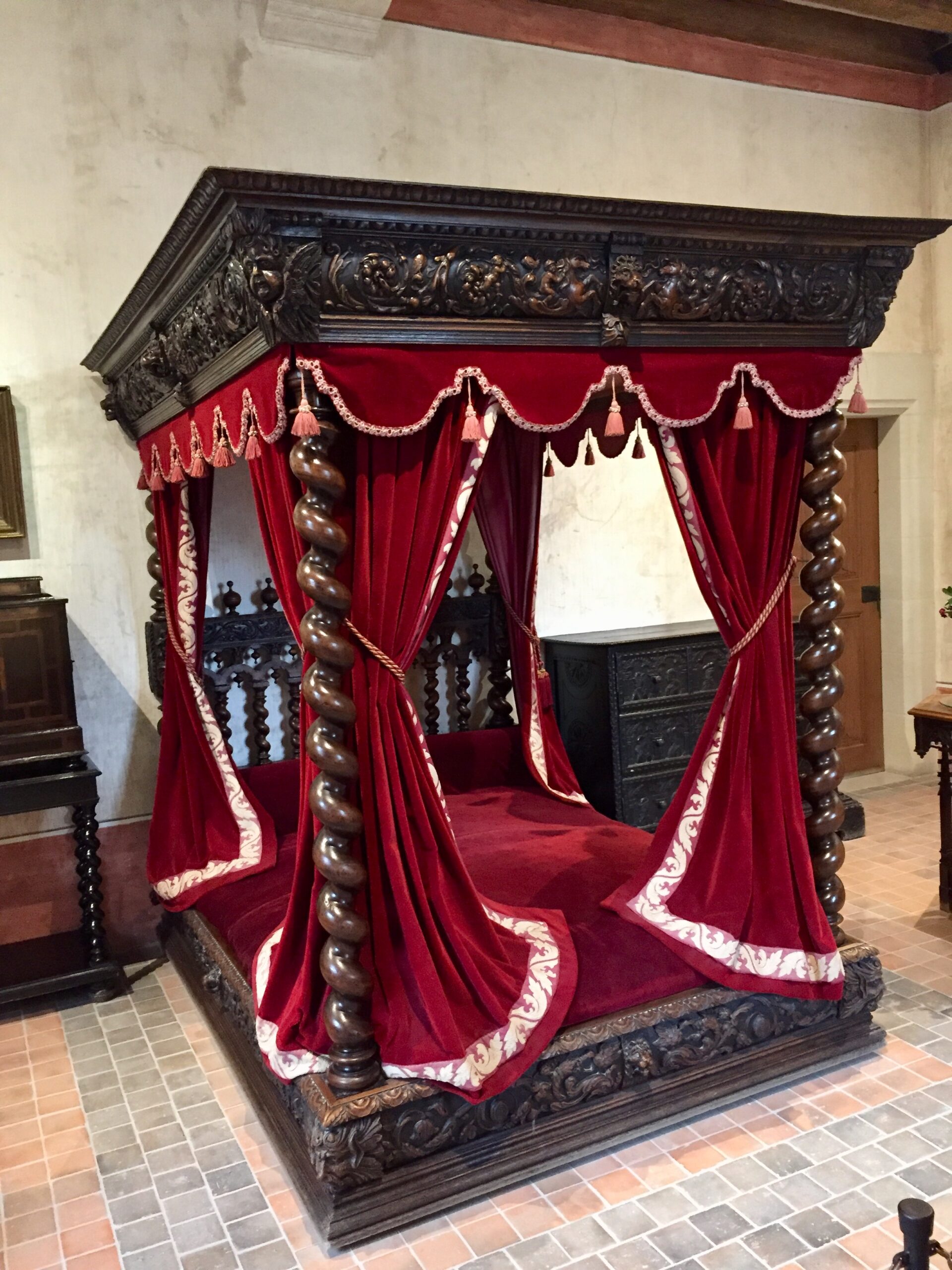
The bed where Da Vinci died in 1519
A ticket for Clos Luce allows one access into the home and the gardens. Following the paths through the woodlands and past ponds and babbling streams, we came across the haunting canvases of faces which had been taken from Leonardo’s famous works. Like pieces of sculpture, 20 full sized reproductions of Da Vinci’s inventions, including a helicopter, a machine gun, and an armored tank were placed around the gardens.
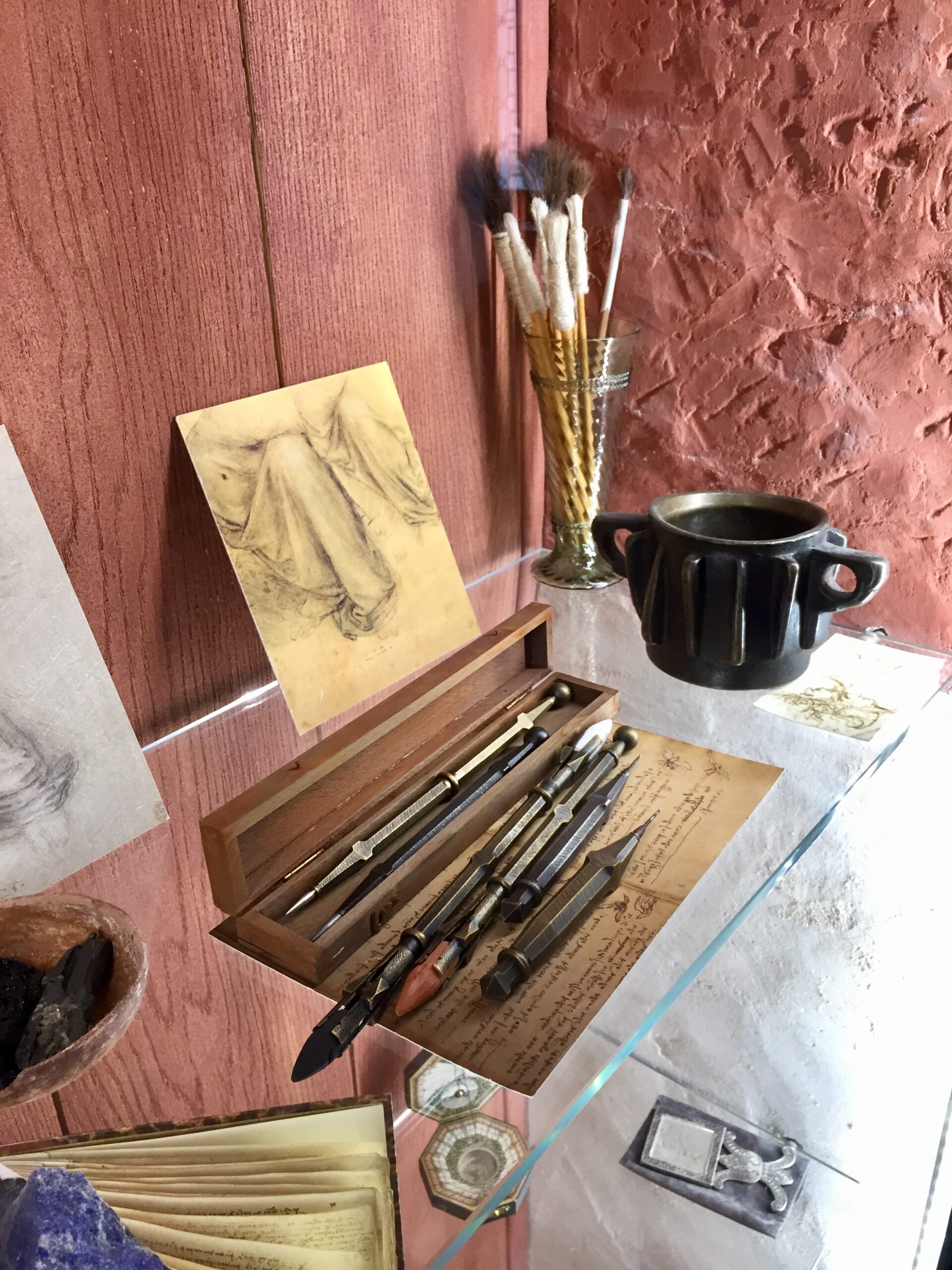
We were mesmerized to actually view Leonardo’s pencils and paintbrushes which produced some of the world’s greatest inventions and paintings
Inside the Chateau, we walked through the bedroom to see the four poster bed sculpted with cherubs and sea creatures where he died in 1519. We also viewed the shelves of Da Vinci’s brushes and pencils, as well as his journals, in his workshop. We were just in awe.
vinci-closluce.com, 2 rue du Clos Luce, Amboise, France
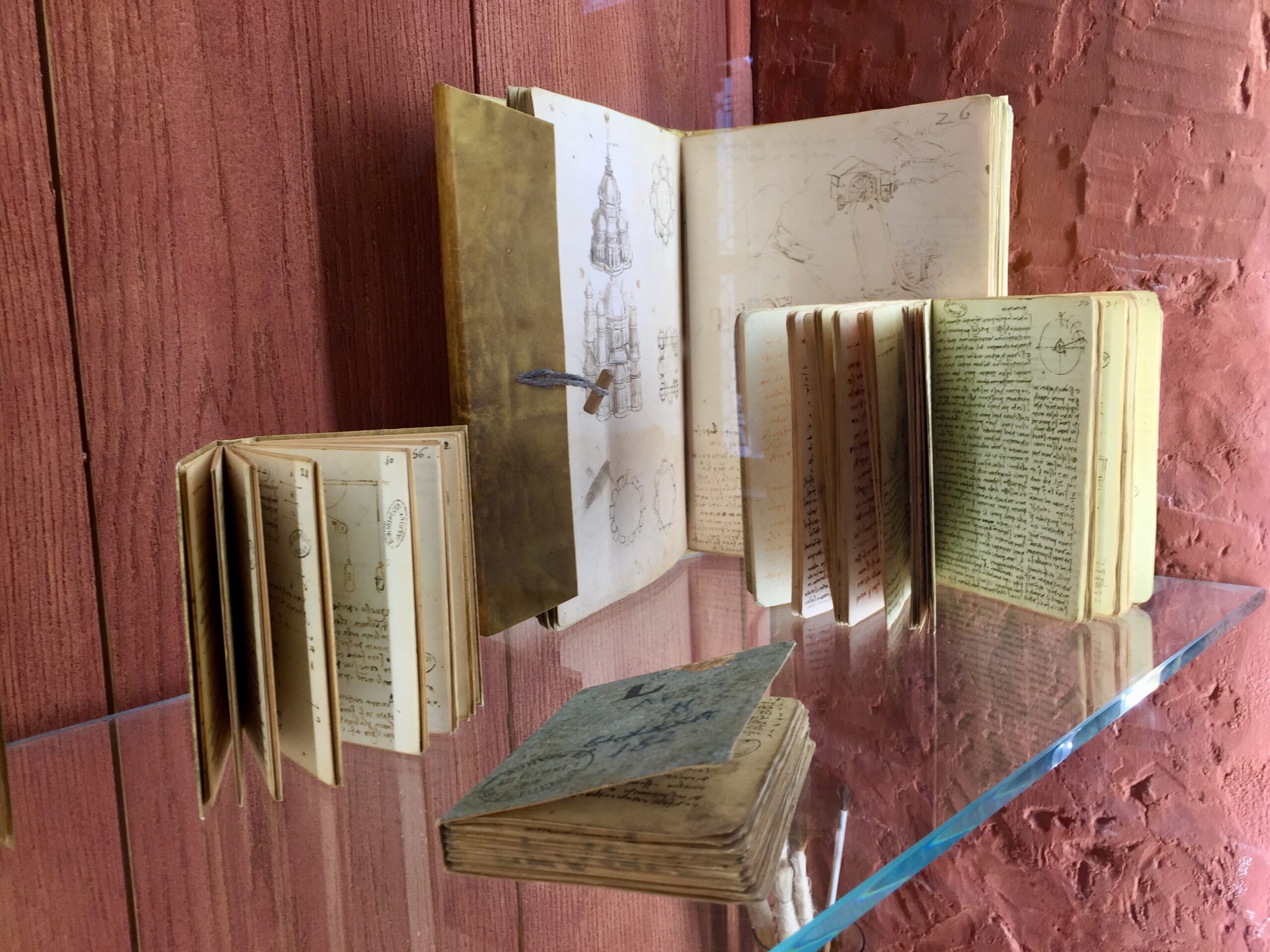
Leonardo da Vinci’s hand written journals in his studio

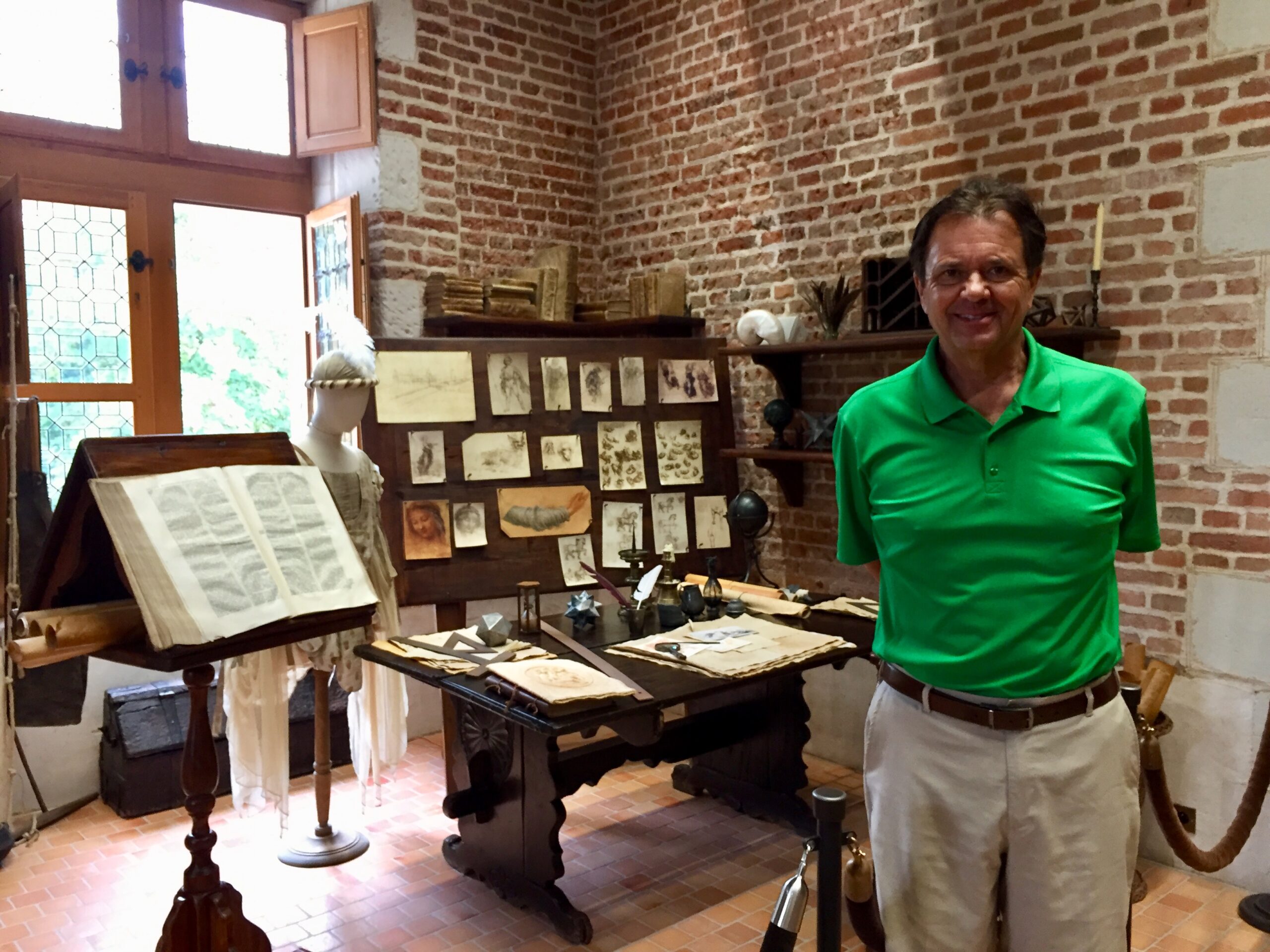
Recent Comments